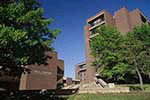MATH 026 HOMEWORK PROBLEMS
MATH 026 – INTERMEDIATE ALGEBRA HOMEWORK PROBLEMS CHAPTERS 1 –5 CHAPTER PROBLEMS 1 Practice Test 2.1 1,3,5,6,11,14,15,19,21,25,282.2 21,27,29,35,37,39,41,45,47,49,53,58,59,64,67,73,77,78,832.3 13,16,25,29,37,41,44,47,53,67,812.4 13,19,21,25,27,31,42,51,53,57,66Practice Test 3.1 8,16,23,27,37,41,45,59,61,633.2 1,3,5,9,12,15,16,17,18,19,243.3 1,3,5,7,9,11,13,17,24,25,27,33,35,43,46,47,49,51,53-62,73,74,76,79,83,85,86,873.4 1,3,5,11,1315,17,19,23,27,32,41,43,45,533.5 1,3a,4,5Practice Test 4.1 5,11,13,19,21,29,31,33,35,43,45,47,49,51,55,57,59,63,654.2 5,11,13,19,21,29,31,33,35,37,43,45,47,49,51,55,57,59,63,6569,714.3 1,5,9,10,12,17,27,29,35,39,474.4 17,26,29,37,39,46,53,57Practice Test 5.1 2,4,10,14,15,255.2 7,15,19,21,23,31,39,45,55,58,69,71,76,78,79,805.3 1-21 (Odd only),53,57,58,63,83,85,93,94,955.4 1,3,5,7,23,29,37,395.5 1,3,11,13,17,19,28,33,35,36,46,49,52,1135.6 1,5,11,13,19,21,25,45,59,61,66,68,705.7 1,5,11,15,19Practice Test MATH 026 – INTERMEDIATE ALGEBRA HOMEWORK PROBLEMS CHAPTERS 6 – 8 CHAPTER PROBLEMS 6.1 1,3,11,12,13,16,17,196.2 9,11,13,19,23,34,36,39,41,436.3 7,13,17,19,21,23,27,31,38,41,45,486.4 3,7,21,29,33,39,43,45,61,63,77,826.5 1,3,5,9,11,13,23,35,37,46,486.6 3,7,9,19,23,25,27,45,49,57,61,71,75,806.7 5,11,15,17,21,25,27,29,33,37,39,45,466.8 11,12,21,23,27,28,33,47,61Practice Test 7.1 1,5,9,25,37,43,51,53,55,61,62,65,71,73,75,77,79,85,87,93,997.2 5,7,15,23,27,31,33,417.3 1,5,9,21,25,29,33,35,37,47,49,53,59,61,65,68,71,72,87,88,89,91,93,99,1017.4 7,11,19,21,25,27,29,35,39,41,51,61,69,717.5 3,5,19,25,31,33,37,45,557.6 7,19,27,37,43,49,577.7 3,4,7,8,17,27,29,39,41,627.8 1,3,7,13,15,17,19,23,25,27,33,41,53,57,61,63,69Practice Test 8.1 1, 4a, 5a, 10a8.2 1,3,7,13,15,19,21,23,31,36,43,69,77,81,89,91,958.3 1,58.4 5,7,11,13,15,21-39 (Odd only),53,57,63,65,718.5 3,5,7,11,13,29,31,33,35,37,39,41,45,49,53,678.6 29,33,37,39,47,518.7 9,11,13,15,29,31,37,39,51,528.8 3,15,29,33,37,41,43,47,61,63,71,73Practice Test
